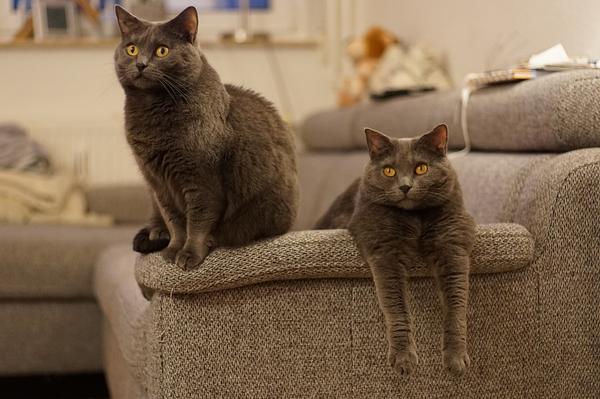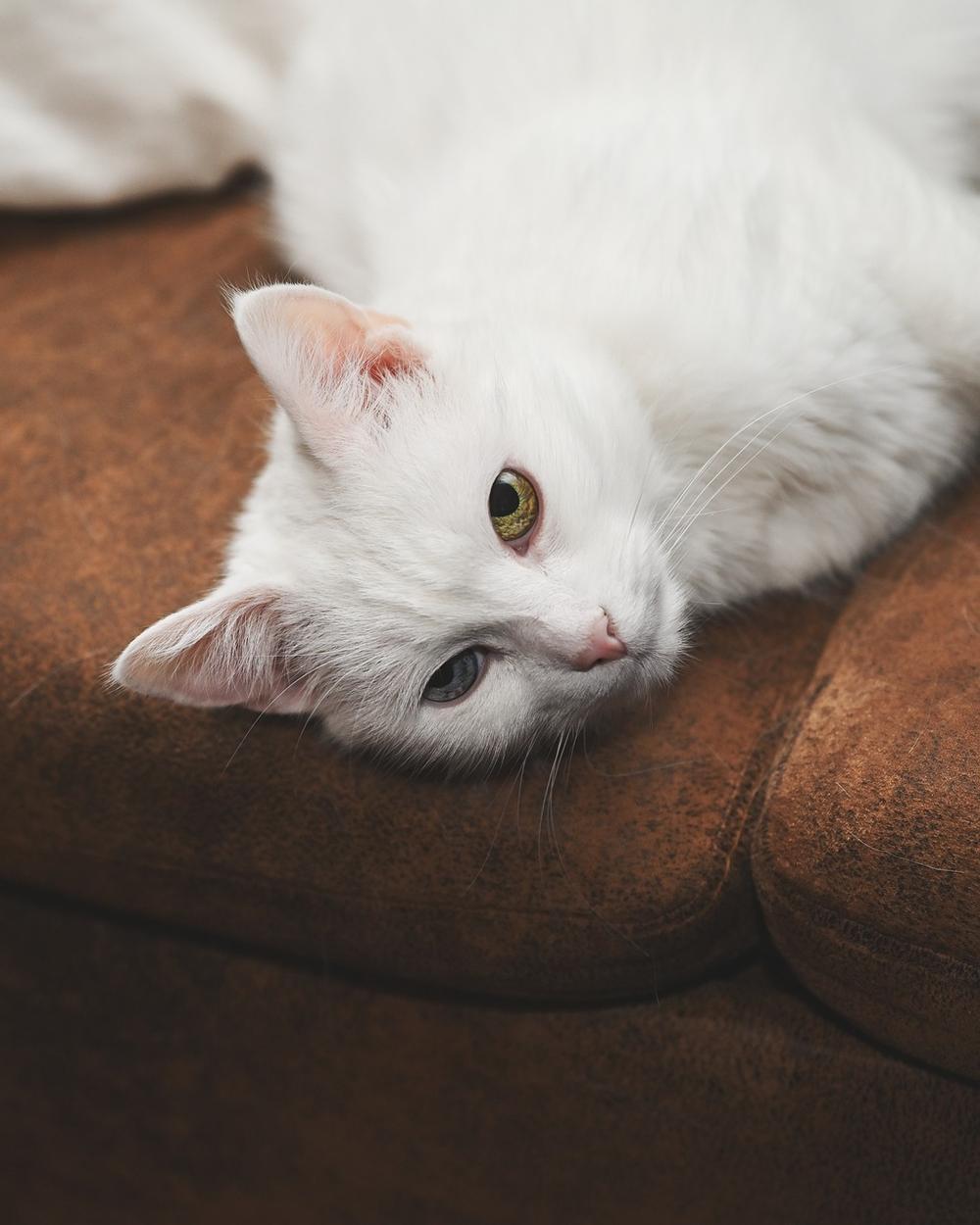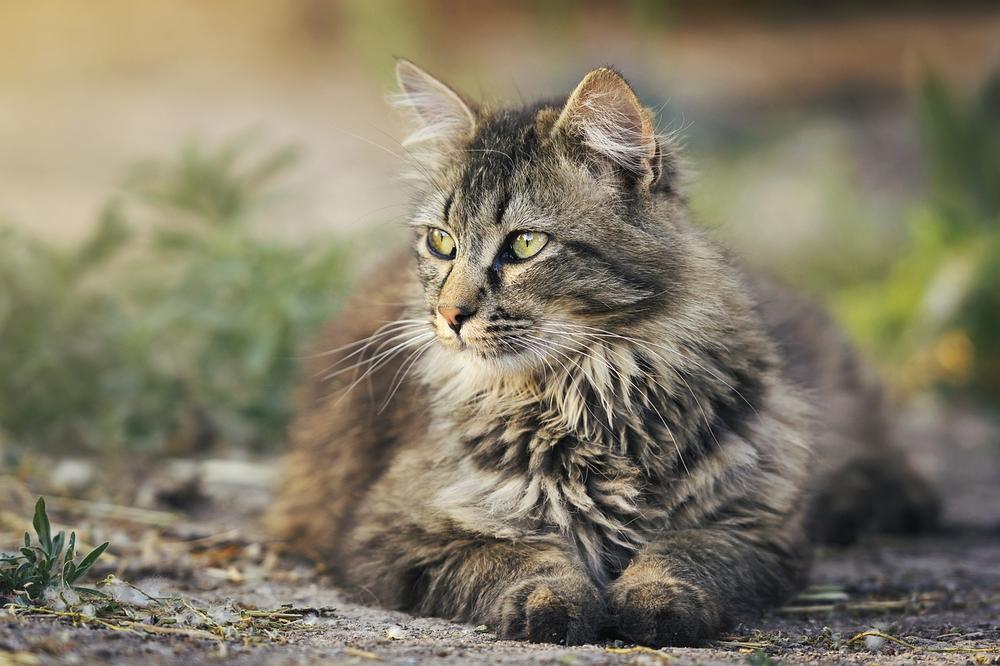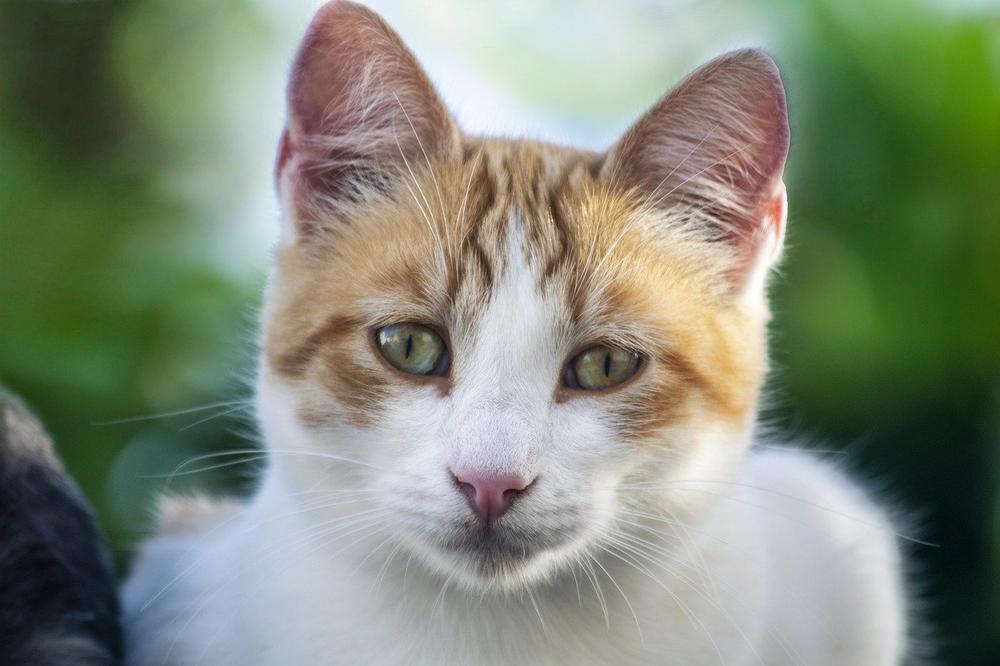Is Chamomile Essential Oil Safe for Cats?

Concerned about the safety of your cats?
Wondering if chamomile essential oil is a friend or foe to your feline companions?
I get it.
Our furballs are our family, and we'd do anything to keep them safe. 😺
You might be thinking, "Can I trust chamomile oil around my precious Whiskers?"
Well, friend. let's sift through the facts together and find out.
Buckle up, because we're about to dive into the chamomile oil-cat safety rollercoaster.
Ready?
Let's begin.
Is Chamomile Essential Oil Toxic to Cats?
Chamomile essential oil is highly toxic to cats and should never be ingested, inhaled, or applied topically. Cats lack the enzymes to eliminate the toxins in essential oils, which can lead to liver disease. Symptoms of toxicity include vomiting, tremors, and potentially liver failure.
Regrettably, chamomile essential oil is extremely harmful to our feline friends and should never be consumed, inhaled, or applied topically to their skin.
Just to clarify, cats simply can't process essential oils like we humans do.
While cats can enjoy chamomile tea for relaxation purposes, using the essential oil is an entirely different story.
Here's the thing:
Cats lack the necessary enzymes to break down and eliminate the toxins found in essential oils, which is where the problem lies.
Resulting liver disease from ingesting chamomile essential oil can have devastating effects.
You may be wondering, what are the signs of toxicity in cats from chamomile essential oil?
These include drooling, vomiting, tremors, difficulty breathing, decreased heart rate, low body temperature, and potentially liver failure.
Certainly not something any responsible cat owner wants to witness, right?
There are specific cats who are at a higher risk of danger from essential oils.

Pregnant cats, cats with asthma or bronchitis, and those with liver issues should absolutely steer clear of chamomile essential oil and other toxic options such as tea tree, ylang-ylang, lavender, peppermint, clove, thyme, oregano, wintergreen, citrus (lemon, lime, orange), and pine. It's better to be cautious than regretful, don't you agree?
Even small amounts of chamomile essential oil can wreak havoc on a cat's health, so you should store it securely and out of your furry friend's reach.
We certainly wouldn't want any accidents happening, now would we?
If you notice any symptoms of essential oil poisoning in your cat, like vomiting, diarrhea, drooling, difficulty breathing, tremors, weak pulse, weakness, seizures, or collapsing, please take immediate action!
Contact your veterinarian without delay or call a helpline for expert guidance.
Swift action could truly be life-saving.
Believe me, when it comes to chamomile essential oil and cats, it's an absolute no-no.
Keep your feline companion safe by completely avoiding any contact with chamomile essential oil. In the end, both of you will greatly benefit.
Main points I'll expand upon further down this article:
- Essential oils should be used with caution around cats.
- Cats can absorb essential oils through their skin and ingestion.
- Cats with respiratory conditions or allergies should be kept away from strong concentrations.
- Diluted or diffused oils are less likely to irritate cats' airways.
- Safe oils for cats include lavender, chamomile, rose, and lemongrass.
- Wash hands after using essential oils to prevent transfer onto cats.
- Topical use should follow a 0.5% dilution ratio.
- Chamomile essential oil should be diluted with a carrier oil before use.
- Consider natural alternatives and pet-safe essential oils for freshening the air.
- Chamomile essential oil can be beneficial in calming cats, relieving joint pain, aiding digestion, and reducing inflammation.
And it gets worse...
Not only is chamomile essential oil toxic to cats, but there are also many other essential oils that can harm our feline companions.
In the next section, we will explore which essential oils are safe for cats and how to use them responsibly.
Stay tuned to keep your curious cat safe!
Is Chamomile Essential Oil Safe to Diffuse Around Cats?
When it comes to using essential oils around your cat, their safety should be your top priority.

Here are 10 guidelines to follow:
- Make sure the room is well-ventilated.
- Avoid having a strong concentration of oil particles in the air.
- Keep your cat away from rooms with high concentrations of oils.
- This is especially important if your cat has respiratory conditions or allergies.
- Dilute or diffuse the oils to minimize any potential irritation.
- Give your cat a place without any scents where they can relax.
- Choose oils that are safe for cats.
- Use only pure tested grade essential oils.
- Don't let the oils diffuse for too long to avoid overexposure.
- Store the essential oils securely to prevent accidental ingestion.
You need to be careful when using sprays, diffusers, or cleaning methods that involve oils.
If any oil gets on your cat's fur, wash it off immediately.
While chamomile essential oil may have negative effects on cats, there are some essential oils like lavender, chamomile, rose, and lemongrass that are safe for both cats and dogs. 😺
How to Dilute Chamomile Oil?
If you want to make chamomile oil safe to use, just follow these 7 easy steps:
- Mix one drop of chamomile oil with 10 drops of carrier oil - like coconut or olive oil.
- This combination gives a dilution ratio of 0.5%.
- Diluting the oil helps avoid any skin irritations or allergic reactions.
- Remember, never put essential oil directly on your cat's body or fur.
- Instead, use the diluted version for topical application.
- And after applying the oil, be sure to wash your hands well.
- Lastly, here are some important precautions to keep in mind:
- Always analyze and dilute each essential oil separately.
- Don't forget, all essential oils, including chamomile, need proper dilution.
- To ensure safety, keep essential oils away from children and pets.
By adhering to these uncomplicated instructions, you can experience the advantages of chamomile oil while ensuring the happiness and wellbeing of your beloved pet. 😊

To ensure the safety and wellbeing of your cat, diluting essential oils is essential.
In my guide on cats and essential oils, I answer important questions like whether eucalyptus oil is safe for cats.
If you want to learn more, I highly recommend checking out my blog post, Is Eucalyptus Oil Safe for Cats.
Alternatives to Using Chamomile Essential Oil
Explore different ways to help your cat feel calm and relaxed
You know what?
Using chamomile essential oil directly on your furry friend is not a good idea.
But don't worry, there are plenty of other options to help them feel calm and relaxed.
Create a cozy environment for your cat
One way to make your cat relax is to provide them with a comfortable and cozy environment.
Give them a soft, warm bed where they can curl up and take a nap.
You can even add some extra comfort by placing soft blankets or pillows around.
Try using calming pheromone sprays
Another option you can explore is using calming pheromone sprays designed to reduce feline stress.
These sprays mimic the natural pheromones that cats release when they feel safe and secure, making them feel more relaxed in their surroundings.
Use natural alternatives like lavender or vanilla
Instead of using chamomile essential oil, you can try water-based diffusers with natural alternatives like lavender or vanilla. These scents can freshen up the air in your home, creating a calming atmosphere without harming your cats.
Look into aromatherapy products made for pets
There are also specially designed aromatherapy products for pets.
These products use essential oils that are safe and pet-friendly, such as chamomile, valerian, helichrysum, frankincense (in small doses), and cedarwood. They can help address various ailments your cat may have.
However, you should note that while essential oils may be beneficial for humans, they can pose risks to cats that outweigh any potential benefits.
Some essential oils like peppermint, fennel, and eucalyptus are safe for dogs but not recommended for cats.
Before making any decisions, I suggest exploring different treatment options and considering what suits your cat's needs and well-being best.
The Benefits of Chamomile Essential Oil for Cats
To employ the calming powers of chamomile essential oil, all you need are a few drops in a diffuser or on bedding. With this simple act, you create a serene environment for your feline friend, as chamomile oil helps cats navigate through anxiety-inducing scenarios like thunderstorms and fireworks.
The benefits of chamomile essential oil for cats extend far beyond mere relaxation.

It is also soothing to their delicate constitution, particularly during daunting visits to the vet or encounters with unfamiliar faces or animals. Furthermore, it eases the discomfort of arthritis and joint pain, offering respite from such distressing ailments.
For those burdened with digestive issues, chamomile essential oil improves digestion while reducing unwelcome inflammation.
Moreover, its anti-inflammatory properties safeguard cats' airways, providing relief to those afflicted by allergies or respiratory troubles.
And that wraps up today's article.
If you wish to read more of my useful articles, I recommend you check out some of these: Is Lavender Oil Safe for Cats, Is Acrylic Paint Toxic to Cats, Can Cats Eat Spider Plants, Are Philodendron Toxic to Cats, and Is Rubber Plant Toxic to Cats
Talk soon,
-Sarah Davis